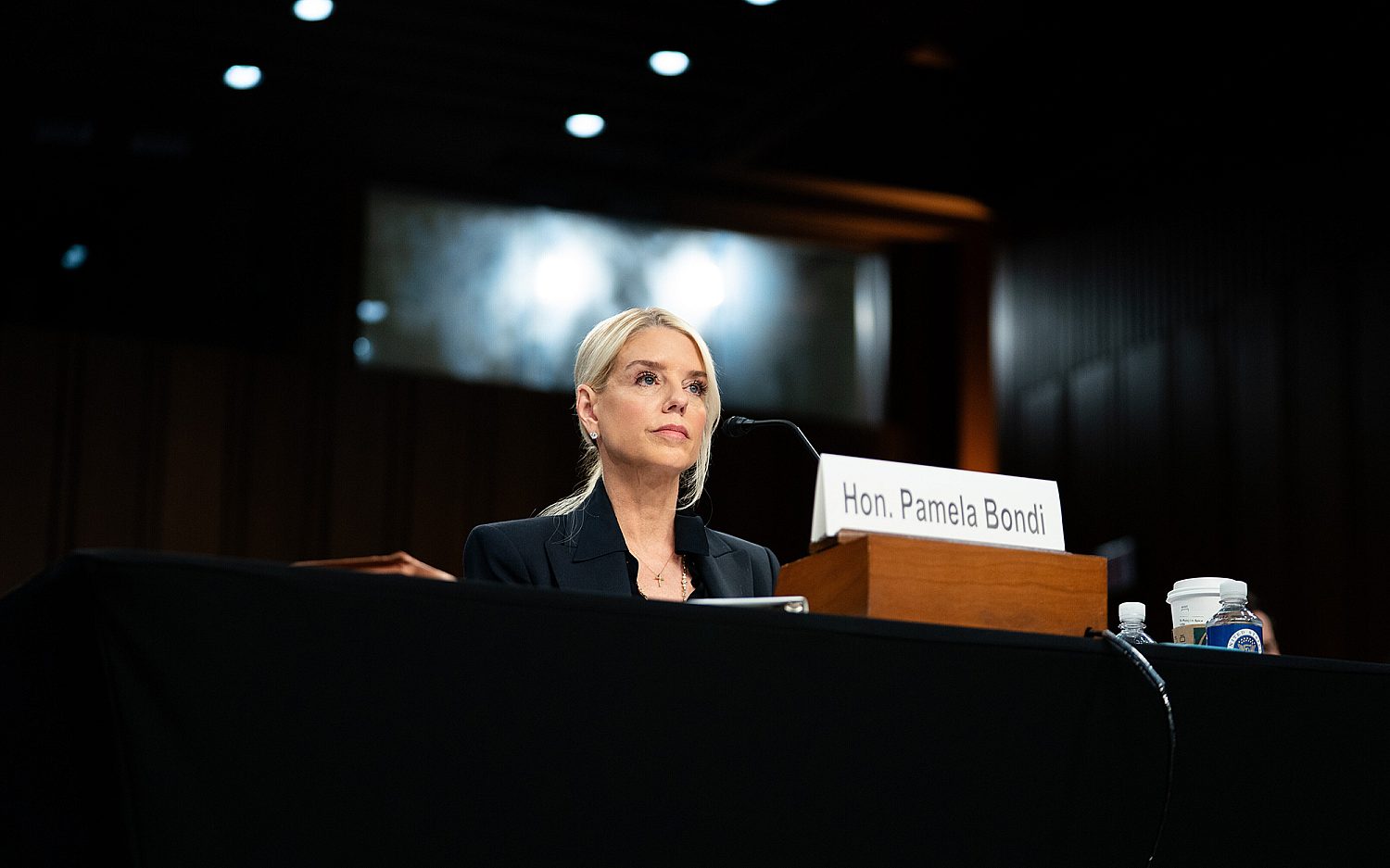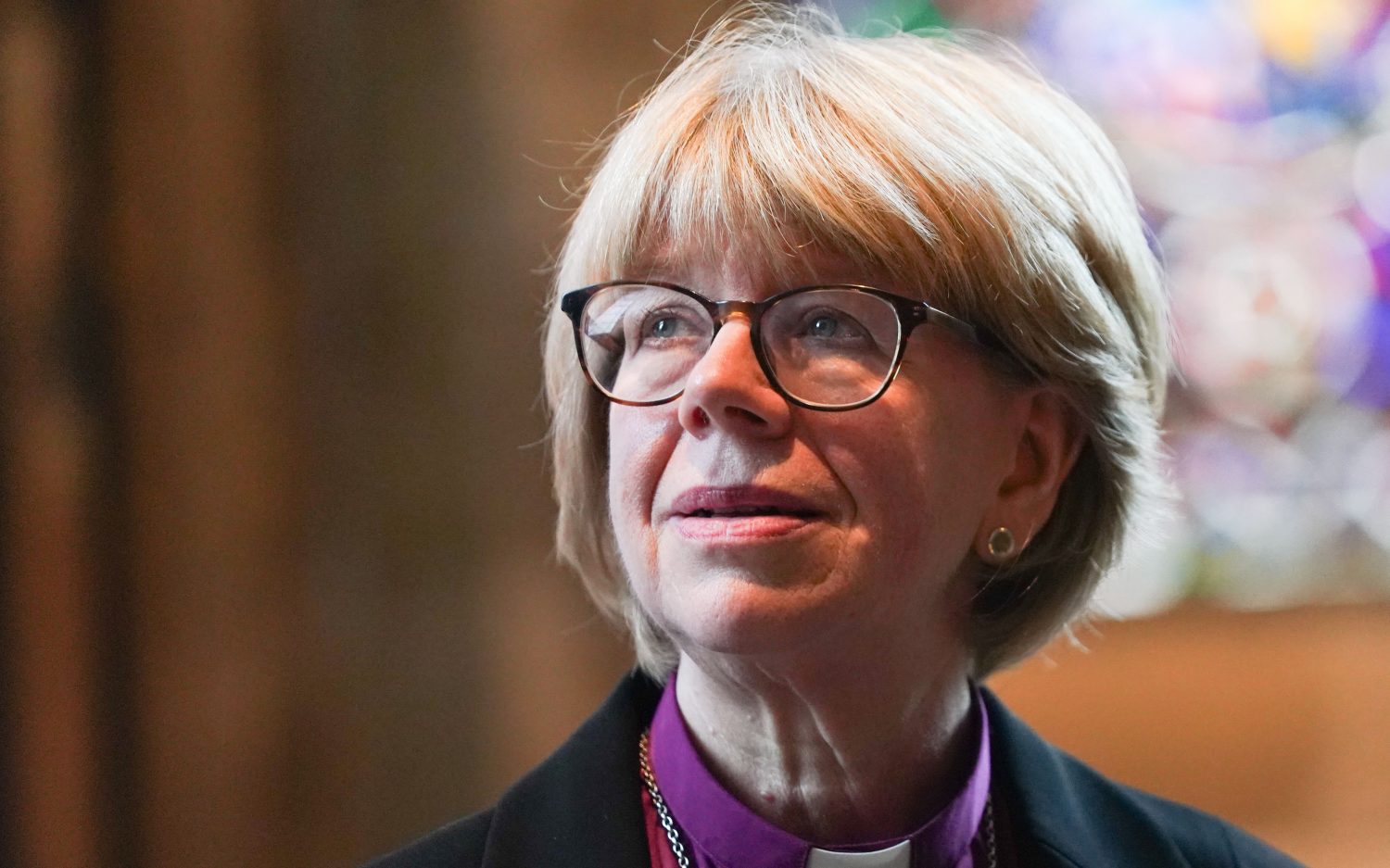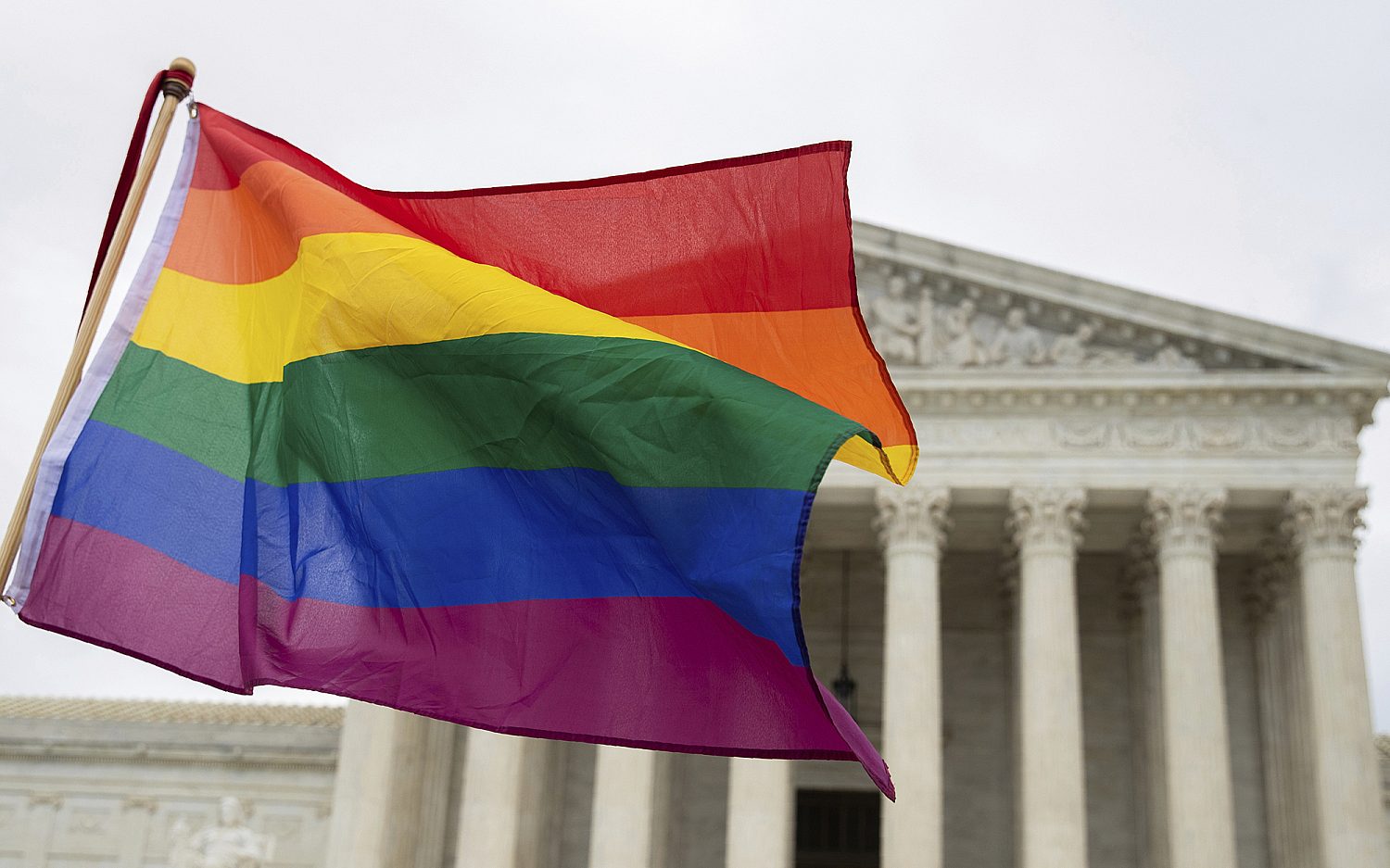A balanced perspective on the news
An excerpt from <em>Restoring All Things: God's Audacious Plan to Change the World through Everyday People</em>
As an editor for WORLD’s digital platform, I find myself immersed in bad news day in and day out, and know how easy it is to become discouraged. But as believers, we trust in a sovereign God and know He is at work even through what appear to be the darkest of days.
To help us remember that, Warren Cole Smith of WORLD News Group and John Stonestreet of the Chuck Colson Center for Christian Worldview help balance our perspective by sharing stories of hope in their book Restoring All Things: God’s Audacious Plan to Change the World through Everyday People (Baker Books, 2015). In the excerpt that follows, the authors tell us how we can be hopeful and make a meaningful difference in the world by learning “to see culture differently” and “the power of story.”
The book inspired a series of events this month co-sponsored by WORLD. The first two took place in Grand Rapids, Mich., last week and Atlanta earlier this week. For those of you in the Dallas–Fort Worth area, there’s one more this coming Wednesday night (April 15). For more information and to purchase tickets, visit the Restoring All Things website. —Mickey McLean
Chapter 1: Great News!
“The only two things that can satisfy the soul are a person and a story, and even a story must be about a person. Men … are much oftener led by their hearts than by their understandings.” —G.K. Chesterton
“The most pressing spiritual question of our time is this: Who gets to narrate the world?” —Robert Webber
There’s a lot of bad news in the world.
As we write this book in the fall of 2014, daily papers and news broadcasts are full of stories about the Ebola epidemic; racial tensions and riots in Ferguson, Missouri, and elsewhere; the beheadings of journalists and ordinary citizens by radical jihadists; and ongoing wars in Iraq, Afghanistan, Syria, and Ukraine.
As you read this book, that list is almost certainly outdated, replaced by a newer list of troubling stories that try our hope afresh. This much we are all guaranteed: If we wake up tomorrow, new troubles await us. It is tempting to despair and proclaim with the Teacher in Ecclesiastes, “Meaningless! Meaningless! Everything is meaningless!”
And yet …
If you look closely, there’s more to the story of our world than just bad news:
At the beginning of the twentieth century, the average American lived only about forty-five years. Today that number is seventy-seven years. We used to argue about whether we ought to help the poor. Today we argue about how best to help the poor, with a track record of measurable success. For example, India was on the brink of mass starvation in 1960. Then came the innovations of American scientist Norman Borlaug, who set off a Green Revolution now credited with saving more than a billion lives. In fact, starvation-level poverty has been reduced by more than half in the past twenty years alone, with some predicting its eradication within the next few decades. Totalitarianism wrote the most tragic chapters of the last century, but most of those terrible regimes had collapsed by the century’s end. The religious liberty watchdog group Freedom House reports that more people now live in countries governed by democratically elected leaders than at any other time in human history. And think about advances in science that have all but eradicated polio, tuberculosis, malaria, and dozens of other diseases.Make no mistake; ours is a fallen world. There is much evil and brokenness to lament. But to paraphrase Mark Twain, the rumors of the world’s demise are premature.
As we said in the introduction, Christians are called to live for the good of the world. This requires understanding and action. We must think clearly about the world and engage deeply when and where we can.
How do we gain a balanced perspective on the good and the bad that exist in our world? Is it possible to see all that’s happening and avoid both despair and naïveté? Can we take the brokenness of the world seriously and still be hopeful? Even more than feeling hopeful, can we actually live in such a way as to champion hope and make a meaningful difference in the world?
We think so, but only if we learn two things. First, we must learn to see culture differently. Second, we must learn the power of story.
The Importance of the “Middle”
In the 1830s, the young French aristocrat Alexis de Tocqueville visited the rowdy, adolescent United States of America and wrote down what he saw in a masterful book, Democracy in America. Even today, almost two hundred years later, his insights remain among the most profound analyses of the American experiment ever written.
Tocqueville, even then, could see that something remarkable was happening in America. Historian and Baylor University professor Thomas Kidd offers this helpful summary of Tocqueville’s findings: “America’s strength came from its religious heritage, its tradition of local participatory politics, and its many mediating institutions and civic associations, all standing between the individual and the government.” In other words, America was strongest in the middle, with a robust civil society limiting the power of the state while allowing citizens to flourish and self-govern.
Benjamin Franklin often gets credit for forming the first cooperative association in America in 1736 when he helped organize Philadelphia’s first volunteer fire brigade. Today more than 1.5 million nonprofit organizations operate in this country, with the overwhelming majority of them consisting of local people meeting local needs and solving local problems. The aggregate impact of the money and labor contributed by these “mediating institutions” runs into the hundreds of billions of dollars each year.
It’s easy to miss just how unusual it is in world history for a country to have such a robust civil society. Particularly today, in the divisive political climate of the United States, we often hear of only two options for fixing what’s broken in our society: federally controlled social programs or individual responsibility. One side wants more federal intervention and wider government-provided safety nets. The other wants unrestricted freedom and personal autonomy. Each of these so-called solutions sees the top of culture as most important, either the remedy for all that ails us or the source of all our problems. The true strength of a society, however, comes from its “middle,” in those activities and institutions that exist between the individual and the government.
Tocqueville observed that America was—and today it remains—unique in the number, scale, and scope of these mediating institutions. We also note that these organizations are valuable not just because of what they do directly but because of how they foster a strong citizenry and a sense of personal responsibility. When a twelve-year-old Boy Scout is elected patrol leader in his Scout troop, he learns about elected office and leadership. When a homeschool mother organizes a local co-op, she empowers herself, her children, and her neighbors without having to depend on the government for services the co-op will now provide. Little League baseball. Kiwanis. Rotary. Lions. Fraternities and sororities. Professional associations. Faith-based ministries. Trade associations. All of these organizations teach participation, leadership, cooperation, and self-determination.
In our own time, management guru Peter Drucker described our impulse for collective action as “that peculiarly American form of behavior. Nothing sets this country as much apart from the rest of the Western World as its almost instinctive reliance on voluntary, and often spontaneous, group action for the most important social purposes.” Charles Murray warned us in his book Coming Apart that one of the most significant (and negative) developments of the past several decades has been the emptying of the middle, the shriveling of local control and local action in government and in civil society. It’s important to note, though, that while this emptying of the middle has weakened our society, it also offers a huge opportunity for Christians to make a difference. Most of us will never run for governor or president, but while we may not provide leadership to change culture from the top down, we all have opportunities to do so from the middle.
A robust civil society, with strong local institutions and citizen involvement, is simultaneously the most effective means of limiting federal intrusion as well as catechizing new generations of citizens in the essential skills of self-government. That’s why the Founding Fathers of our country carefully planned a culture and legal infrastructure that encouraged the formation and sustenance of mediating institutions. It also explains why the “freedom to assemble” is one of the essential freedoms outlined in the First Amendment to the Constitution.
Also in the First Amendment is the guarantee of the freedom of religion. Our Founding Fathers knew these freedoms were inextricably connected. The freedom to assemble allows cooperative action, and without it, the freedom of religion loses much of its meaning. It should come as no surprise, then, that the vast majority of the “mediating institutions” in this country—the vast majority of the associations and nonprofits—are faith-based.
Case in Point: Strategies to Elevate People
Take, for example, STEP (Strategies to Elevate People) Richmond, a ministry to the inner-city neighborhoods of Virginia’s capital city. With a small paid staff, volunteers of STEP Richmond are the real “secret sauce.” They lead the Bible studies, summer book clubs, camps, and field trips of the ministry, all with the active participation of Richmond churches, both large and small.
The success pioneered in Richmond spawned STEP programs around the country. A 2010 WORLD article featured STEPdc, a STEP program operating in the rough Columbia Heights neighborhood of Washington, DC. The breakdown of the family there is epidemic. For example, of the 175 households in a nearby government housing project described in the article, only eleven were led by men. STEPdc labored heroically in this neighborhood for twenty years, with many successes. The Reverend Jim Till, who led STEPdc, told WORLD, “We’ve had kids go through our tutoring program who came back to tutor others when they were older.”
This sort of work is hard, of course, and success is mixed. As Till also admitted, “We’ve also had guys end up in jail.” Indeed, a couple of years after the WORLD article appeared, STEPdc closed its doors.
And yet even the stories that do not have happy endings can instruct. Similar work to confront the challenges of inner-city life continues all across America and around the world. The STEP movement is just one of thousands of grassroots organizations around the country confronting the local needs of the inner city with local solutions. The conclusion is clear: Localized work to rebuild civil society can make a significant difference.
How Stories Matter
Stories such as the one above teach in ways that bulleted lists and academic lectures simply cannot.
Consider the impact of one television program on the cultural imagination: Will & Grace. If you doubt the impact, consider this timeline. In 1996, the U.S. Congress passed the Defense of Marriage Act (DOMA). Democratic President Bill Clinton signed the bill into law. In 1998, Will & Grace premiered. It aired for eight seasons, and for four of those seasons it was the number one situation comedy on television. By 2013, significant parts of DOMA were overturned. By 2014, same-sex “marriage” was legal in more than thirty states. The program continues to be popular in syndication and continues to receive credit for changing attitudes toward homosexuality. In 2012, Vice President Joe Biden said the show “probably did more to educate the American public on LGBT issues than almost anything anybody has ever done so far.” The Smithsonian Institution added items from the program to its LGBT (lesbian, gay, bisexual, transgender) history collection.
It’s often said that politics is downstream from culture. This is mostly true. It’s also said that ideas have consequences. This is true for both individuals and cultures. But there’s another, even deeper truth that many miss: The ideas that shape politics and a culture are rarely advanced by argument. Rather, they are advanced by the stories that shape our imaginations. If you can control the stories a people see, hear, and tell each other, you can ultimately control what they think and even how they think.
Jesus, it seems, understood this, for the Bible plainly tells us of times when Jesus spoke to large crowds and “did not speak to them without a parable” (Mark 4:34).
To understand the importance of stories, consider the mathematical symbol pi. If you’ve had high school math, you know pi is 3.14. Some of you who had a bit of higher math know that pi is actually an irrational number: an infinite series of non-repeating numbers.
Now, if we asked you to recite pi to 10 places, few could do it. And 100 digits? Forget about it. However, most of us have hundreds if not thousands of numbers in our heads ready for easy recall: your 10-digit home phone number, your 10-digit cell number, your wife’s or your husband’s number, your nine-digit Social Security number, the year you graduated from high school or college, and many more.
We remember these numbers because of the stories behind them. Those stories give them meaning and context—and make them memorable.
But modern evangelical Christians often miss the power of story. We tend to proclaim the truth of Christianity as if we were reciting pi to 10 decimal places, forgetting that we live in a post-Christian and postmodern culture that has forgotten the great biblical story of creation, fall, redemption, and restoration. This story, sometimes called the biblical meta-narrative, is as foreign now to Western culture as Chinese history is. Yet this story is the context that makes sense of the truth we wish to proclaim.
Those of us who understand and believe the biblical meta-narrative know that we have facts, logic, reason, and history on our side. But we, too, often think that what is obvious to us must be obvious to all. It is not. Stories make the world come alive and facts memorable. We need to stop asking people to memorize pi to the 10th decimal point and start telling them stories that—in the end—will allow them to see the world more like it really is. We need to get better at telling stories if we want our message to be heard.
The strategy of this book is to tell stories. As we learn of the great work God is doing through His people in the world, not only will we be inspired to embrace the redemptive responsibility the church has in the world, but we will be inspired to join in. And as we tell these stories to others, we may find a lost world regaining familiarity with the truths of Christianity and, more importantly, being drawn to Christ, the Storyteller they need to know.
Stories to Get Us Started
It only makes sense, then, that we would begin by telling a couple of stories.
As we write this in the fall of 2014, Ebola is generating a great deal of fear around the world. Doctors are fighting outbreaks in other countries, both to cure patients and to prevent the spread of the virus. Among all the different angles of this story, one is that many of the doctors waging war against Ebola, and in some cases becoming sick and dying in the fight, are Christians.
We find it interesting but not surprising. Throughout history, Christians have often run toward, not away from, the misery of others. The sociologist and historian Rodney Stark recounts many such stories in his book The Rise of Christianity. For example, between AD 250 and AD 270, a terrible plague called the Plague of Cyprian, after the man who wrote about it, devastated the Roman Empire. Up to five thousand people succumbed to the plague in Rome alone at the height of its devastation.
The plague coincided with the first empire-wide persecution of Christians under the emperor Decius. Decius and other enemies of the church blamed Christians for the plague. That claim was, however, undermined by two inconvenient facts. First, Christians died from the plague just like everyone else. Second, Christians cared for the victims of the plague, including their pagan neighbors, unlike everyone else.
We were reminded of this historical episode by a recent story told on National Public Radio’s All Things Considered. Host Robert Siegel interviewed Stephen Rowden, who volunteers for Doctors Without Borders in Monrovia, Liberia, and has the grim task of managing the team that collects the bodies of Ebola victims. Rowden and his team retrieve between ten and twenty-five bodies a day. Since close contact with the victims is the chief means by which the usually deadly virus is spread, Rowden and his team members live with the risk of becoming victims themselves.
What’s more, living in the midst of this death and suffering takes an emotional toll. On the program, Rowden recalled entering a house and finding the body of a four-year-old victim who had been abandoned by her family. His typically British understatement failed to mask how the discovery had impacted him. “I found that a very sad case,” he told Siegel.
Siegel then asked Rowden if he was a religious man. “I am. Yes, I’m a practicing Christian,” he replied. When Siegel asked whether what he had seen tested his faith, Rowden replied, “No, I get great strength from my faith and the support of my family.”
As our friend Eric Metaxas said in his BreakPoint commentary on the story, “Nearly eighteen centuries after the Plague of Cyprian, Christianity still prompts people to run toward the plague when virtually everyone else is running away.”
The Christian response to the Ebola crisis is a beautiful example of Christian healers using their gifts and calling to restore where a terrible disease is attempting to destroy. Twenty-first-century missionary doctors are following directly in the footsteps of first- and second-century Christian mothers, fathers, doctors, and neighbors. Next generation Christians should hear that story and be moved to “go and do likewise.”
Figuring out what it means to “go and do likewise” is not always easy.
Jim Liske, the CEO of Prison Fellowship Ministries, often talks of his visit to the ancient city of Ephesus. In the first century AD, Ephesus was a pagan town, dominated by the Temple of Artemis, one of the ancient Greek gods. The priests of the temple maintained a perpetual fire there in worship to the false deities.
Fire was, of course, a basic necessity of life for the people because it allowed for cooking, cleaning, and warmth. If the fire went out in a home, the residents were in big trouble. The only solution was to go to the temple with a ceramic bowl to get hot coals from the temple priests. The priests, of course, required a payment for tribute to appease the pagan gods and maintain the temple. The fire-keepers of this ancient temple were ancient Ephesus’s equivalent of the power, water, sewer, and gas companies all rolled into one. And they were a monopoly. To get fire from another source, the priests taught, was an affront to the gods and risked their wrath.
Archaeology has unearthed how the Christians in Ephesus lived differently in that ancient city. When they noticed a home without fire, they would take hot coals to that family from their own fires in their own “fire bowls.” This simple act of love of neighbor made a powerful statement. First, it provided lifesaving fire to a person who may have been too poor to pay a tribute at the temple. Second, it deprived the pagan temple of an important means of financial support. Third, it proclaimed to the world that the Christians in Ephesus were not afraid of the pagan gods.
When Liske tells this story, he concludes with a question: “What does it mean to be a fire-bearer today?” It’s an interesting question. Though we have no record of those first-century Christians picketing outside the Temple of Artemis or successfully having laws passed in their favor, their acts of kindness toward their neighbors sped the demise of the Greek temple system and led to the rise of Christianity.
It is our prayer that the stories in this book will accomplish two things. We hope to inspire everyday Christians to “run toward the plague when everyone else is running away,” and we hope to see the church today have the strategic wisdom to be fire-bearers in ways that are restorative and life-giving, and not merely reactionary.
Conclusion and a To-Do List
Each chapter in this book features stories to inspire, teach, and equip. After the stories, each chapter concludes with a section that summarizes the key ideas of the chapter and suggests a few things we can do to become a part of the work God is doing in our communities to restore all things to Himself. Because we both are avid readers who believe that “leaders are readers and readers inevitably become leaders,” you will find some book recommendations among the list of “things to do.” You can find the full references for the books we recommend in the bibliography in the back of the book.
So what is the “big idea” of this chapter? It is this: God is always at work in the world, actively “restoring all things to Himself.” Those with “eyes to see” and “ears to hear” will look locally for where God is working and join wherever and whenever we can. We find the best opportunities to join God’s work not by complaining loudly about what is going wrong at the top of culture but by meeting local needs within our communities from our areas of influence. When we look for the everyday stories of redemption all around us and join in, we’re joining the Great Story of Redemption that is being accomplished by Jesus Christ.
Here are some ways to start:
Read “Telling the World Its Own Story” by Richard John Neuhaus (available online) and the book How Now Shall We Live? by Charles Colson and Nancy Pearcey to more fully grasp the idea of Christian worldview and our responsibility to the culture around us. Using the questions given at the end of the introduction to this book, do an inventory of where God may be calling you to work in your sphere of influence. Join us as we continue our journey through various areas of culture and human need and how God is using His people in these areas. In other words, keep reading! Better yet, invite a friend to join you.Excerpted from Restoring All Things: God’s Audacious Plan to Change the World through Everyday People by Warren Cole Smith and John Stonestreet. Baker Books, 2015. www.bakerbooks.com. Used with permission.
An actual newsletter worth subscribing to instead of just a collection of links. —Adam
Sign up to receive The Sift email newsletter each weekday morning for the latest headlines from WORLD’s breaking news team.





Please wait while we load the latest comments...
Comments
Please register, subscribe, or log in to comment on this article.